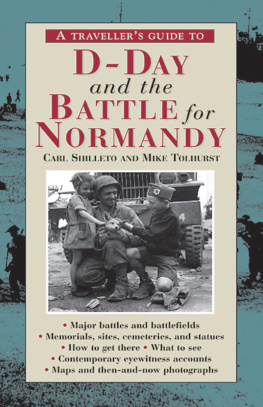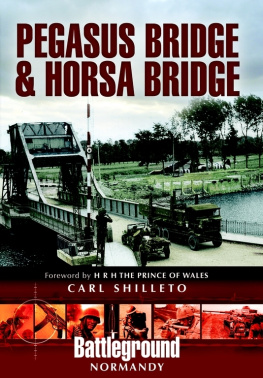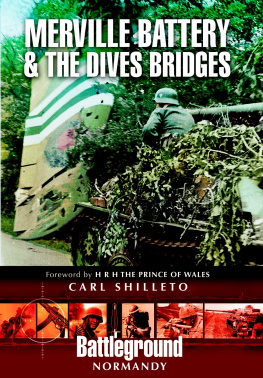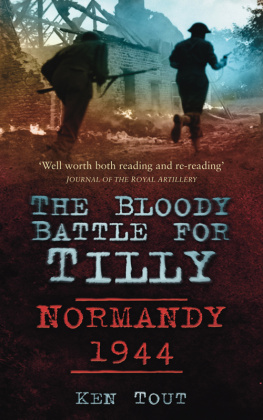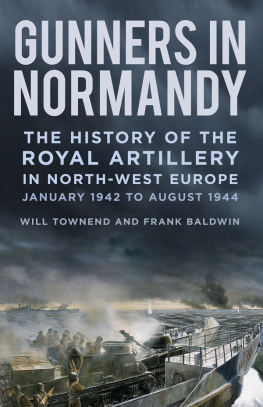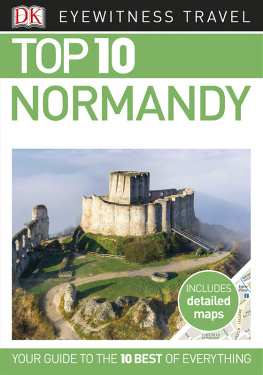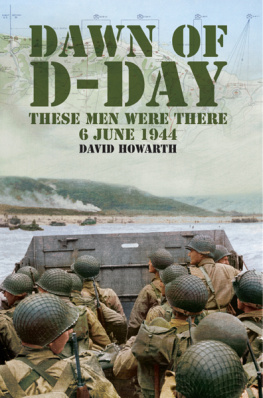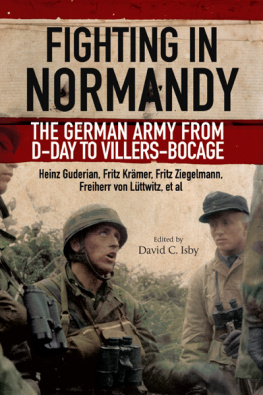THE INTERLINK BATTLEFIELD GUIDES
THE TRAVELLERS GUIDES TO THE BATTLES AND BATTLEFIELDS OF WORLD WAR II is a new series of guidebooks that uses eyewitness quotes, then-and-now photographs, interviews with those who were there, and absolutely up-to-date information to recreate for the casual tourist and the military scholar alike the great battles and campaigns of World War II.
Carl Shilleto works as a specialist battlefield guide for one of the largest coach tour firms in the UK covering areas such as Normandy, Arnhem, Nijmegen, Oosterbeek, Anzio, Salerno, and Monte Cassino. As a writer, he is a specialist on the Normandy Campaign. His other works include The Fighting Fifty-Second, Pegasus Bridge and the Merville Battery, Utah Beach & St Mre glise, D-Day Beaches of Normandy and Devils and Eagles in Normandy .
Mike Tolhurst is a specialist on the history of the US Army in Europe. His interest in the subject dates back fifty-five years to when Mr. Tolhursts Royal Navy father was a crew member of a craft that landed the US Rangers on Omaha Beach for their attack on the guns of Pointe du Hoc. Mike Tolhurst has supported and kept a close relationship with the American Rangers ever since. Mr. Tolhurst has written numerous magazine articles and is also the author of The Battle of the Bulge St Vith and Bastogne .
Also available in this series:
THE BATTLE FOR THE GERMAN FRONTIER
(September 1944 to January 1945) by Charles Whiting
To request our complete 4o-page full-color catalog,
please call us toll free at 1-800-238-LINK, visit our
website at www.interlinkbooks.com , or write to
Interlink Publishing
46 Crosby Street, Northampton, MA 01060
e-mail: info@interlinkbooks.com

This edition first published in 2013 by
INTERLINK BOOKS
An imprint of Interlink Publishing Group, Inc.
46 Crosby Street, Northampton, Massachusetts 01060
www.interlinkbooks.com
Copyright Carl Shilleto and Michael Tolhurst 2000, 2002, 2004, 2008,
2010, 2011, 2013
All rights reserved. No part of this publication may be
reproduced, stored in a retrieval system, or transmitted in any form
or by any means, electronic, mechanical, photocopying, recording
or otherwise without the prior permission of the publisher.
Library of Congress Cataloging-in-Publication Data
Whiting, Charles,
A travellers guide to d-day and the battle for Normandy/Carl Shiletto and Mike Tolhurst
p. cm. (The travellers guides to the battles & battlefields of WWII)
ISBN 978-1-56656-555-4 (pbk.)
1. BattlefieldsEurope--Guidebooks. 2. EuropeTours. 3. World War, 1939-1945CampaignsWestern Front. I. Tolhurst, Mike II. Title. III. Series.
Book design: Ruth Shane
Maps: David Ashby
Series Editor: Charles Perkins
Printed and bound in the United States of America
CONTENTS
Metric Measures and Equivalents
Length
1 meter (m)= 1.0936 yd = 3.28 ft
1 kilometer (km)= 1000 m = 0.6214 mi
Temperature
Celcius= 5/9 (F-32)
Fahrenheit= 9/5C+32
INTRODUCTION
M AJOR G ENERAL D WIGHT D. E ISENHOWER , known as Ike to his friends and colleagues, received his third star on July 7, 1942. With this extra pip came the command of the entire Allied force for the seaborne invasion of North Africa, codenamed Operation Torch. The successful Combined Operation took place in November of that year and, coinciding with a successful counter-offensive by the Russians in their homeland, finally proved that the forces of Hitler' s mighty military machine were not invincible.
A conference was arranged and the Allied leaders, Roosevelt, Churchill, and Stalin and their Combined Chiefs of Staff, met at Casablanca in January 1943. Stalin was unable to attend but he let it be known that he expected his allies to open a second front in northwest Europe during 1943. The Chiefs of Staff ruled out an invasion of northern Europe that year, but did, however, appoint Lieutenant General Morgan as Chief of Staff to the Supreme Allied Commander (COSSAC) with the task of preparing the detailed plans needed for an invasion of the continent. By way of compensation to the Russians it was agreed that, following the success of the campaign in North Africa, the Allies would invade Sicily and mainland Italy, thereby forcing the Germans to divert some of their resources away from the Russian front.
By February 1943, Ike had earned the respect of his coalition superiors and was promoted to full general. Later that year he commanded other successful operations in Sicily and Italy, which ultimately ensured his appointment as supreme commander of the Allied Expeditionary Force in the first week of December 1943.
The initial planning organization of COSSAC had served its purpose by January 1944 and the Supreme Headquarters of the Allied Expeditionary Force (SHAEF) was formed in its place. Under the supreme command of Eisenhower, Air Chief Marshal Tedder was appointed deputy supreme commander; Lieutenant General Bedell Smith was to act as Chief of Staff; General Montgomery as commander-in-chief of the Allied ground forces; Admiral Sir Bertram Ramsay as naval commander-in-chief; and Air Chief Marshal Leigh-Mallory as air commander-in-chief. Together, with some 20,000 staff this headquarters mobilized, assembled, and also co-ordinated Operation Overlord the greatest air, naval, and ground assault ever to be planned and executed.
From left to right: supreme allied commander, Dwight D. Eisenhower; commander-in-chief of the Allied ground forces, General Bernard L. Montgomery; and deputy supreme commander, Air Chief Marshal Sir Arthur Tedder in Normandy, June 1944.
During the first few months of 1944 the south of England was transformed into a giant military base. Over three million soldiers, sailors, and airmen were training to play their part in the invasion of Europe. Those that entered the top security transit camps were effectively cut off from the outside world. Headquarters staff officers carefully coordinated and recorded the movement of every unit to ensure that the planned movement and embarkation of the fighting troops and the transfer of their vital supplies would run with clockwork precision. With an initial assault force of over 170,000 men and 20,000 vehicles it was a logistical nightmare for the planners involved.
Operation Neptune was the codename given to the naval part of Overlord. Over 1,000 supply vessels and 4,124 landing ships and craft would be used to transport the combat troops and their equipment across the English Channel. For the protection of the naval convoys, and to help soften up the German coastal defenses by naval bombardment, an additional 1,213 warships would sail with the armada.
The Germans, of course, realized that the Allies would very soon try to open a second front in the west. Clever deceptions planned by the Allies had ensured that the Nazis did not know the precise location of the invasion so Hitler issued a numbered Weisungen [War Directive] that contained direct orders emphasizing the need to strengthen the Atlantic Wall and to protect the coastline of his Third Reich, which extended from Denmark down to the Spanish border.
EYEWITNESS
Coastal defenses under construction will be completed with all possible speed, and the establishment of additional coastal batteries and the laying of further obstacles on the flanks will be considered.... I expect all staffs concerned to exert every effort during the time which still remains in preparation for the expected decisive battle in the West.

